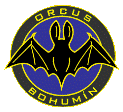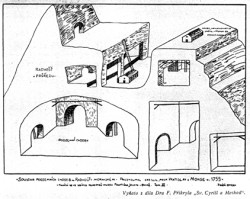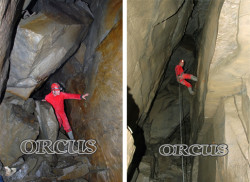Josef Wagner
The attention of explorers ,as well as that of the Beskydy native inhabitants, was mostly attracted by the caves beneath Pustevny and Radhošt , perhabs owing to the greatest numer of legends and myths surrounding them. According to J.Skutil (1957), the oldest preserved evidence of the caves dates back to 1639. The Radhošť caves are often associated with the date of St.Cyril´s and St.Method´s arrival, when the caves became a shelter for the devotional requisites of the Radegast cult worshippers ,as is still believed (J.Foldyna, 1968).
Perhaps the most attention and explorers´ interest were focussed on The Radhošť cave after the ydar 1755, after publishing the famous map by professor Vratislav of Monse. The originál map was said to have been deposited in the Francis Museum in Brno.The duplicate which was then used was made in 1905 by Moritz Trapp for Fr.Přikryl. The originál drawing by Vratislav of Monse ,however ,has disappeared from the manuskript and nothing is known about its further destiny. Some of the Explorer therefore believe that the duplicate was a counterfeit, too.Moreover Vratislav of Monse suspected to never been to the Radhošť underground.
It might be, however, interesting, that B.Strnadel –Četyna comparing the sites of old shepherds´ huts on the Radhošť ridge with thein positions on the Vratislav of Monse map found out they were the same. (The posile explanation is that the shepherds did use the underground corridors to store thein milk products there.)
Another interesting document dealing with the Radhošť underground dones from 1830.It is the so called „ Osmerková knížečka“ a Small Booklet by Jan Šebesta,describing a search for a treasure in Radhošť .The manuskript of the paper was deposited by Fr.Přikryl in the Olomouc museum.It does not only present a Lachian-dialekt description of the journey for underground chambers are also mentioned. A visit to the Radhošť „holes“ was described again in 1836 by A.Heinrich, who called the holes pseudocaves. In the „Tourists´Journal“ Vol.XXV,an expedition into the caves in Pustevny was described by J.R.Vitásek. Between 1867 and 1881 several explorers visited the Radhošť underground (Klička, M.D.,Sv.Čech and others).Another description of the Radhošť cave could be found in the pamphlet „Ďůry na Radhošti“ (1927), where V.Obšívač reports abouth the 1886 expedition into the caves.
Having the entry to Cyrilka broadened first, Fr.Přikryl accompanied by R.Mládek made explorations there in 1895.He believed that the Cyrilka cave in Pustevny was connected with the underground galleries of the Radhošť Volářka cave (the caves being 4 km far from each other), the cave chambers being rock-buried only on the locality called Záryje, where tne mountain slope has been modelled into a sequence of depressions and ground steps. Fr.Přikryl also drew a map of Radhošť underground, which seems, however, to be rather the autor´s imagination than a realistic portrait ( he speaks about the accessible lenght of caves of 200 m at most). The world-known karst explorer K.Absolon also visited the caves and studied their fauna.
A more realistic description of the Cyrilka and Volářka caves wa given by K.Kramoliš,who, accompanied by F.Bayer, J.Mazák and Fr.Drápal, undertook several expeditions into the caves and made some research there. The descriptions was published in the Valašské Meziříčí Museum Society Bulletin in 1904.
Further exploration and research in the caves were accomplished in 1903 by Fr. Batke ,a forman in a mine, who was believed to penetrace 200 m inside Cyrilka , and by Jar.Kytlica ,whose description of Cyrilka from 1946 was identical with that of Fr. Přikryl of 1895.
As the first realistic map of Cyrilka , including the explanation on its origin, is considered the article by D.Tučník in the Czechoslovak Karst journal of 1953
The Ondráš caves beneath Mt.Lysá hora ,were seriously studied for the first time in 1956 by S.Novosad ,followed by J.Foldyna.
In 1963-1965 J.Pavlica and J.Foldyna accomplished large-scale research and exploration of all the pseudokarst caves so far known.In 1969 comprehensive research of the West-Carpathias-outher-flysh-range pseudokarst caves was launched by the members of the Speleologists´Club ORCUS Bohumín (the present local organization of the Czech speleological Society in Bohumín) headed by Josef Wagner .The work has been furthered till nowadays.During more than 40-year research in the region some pseudokarst caves were succssesfuly located and new caves were revealed by means of opening works.New topografic and geomorphological dokumentacions of the caves were finished, the fauna and possibilities of its reservation were studied in detail, as well as the dynamics of the cave microclimate and the recent slope processes.




